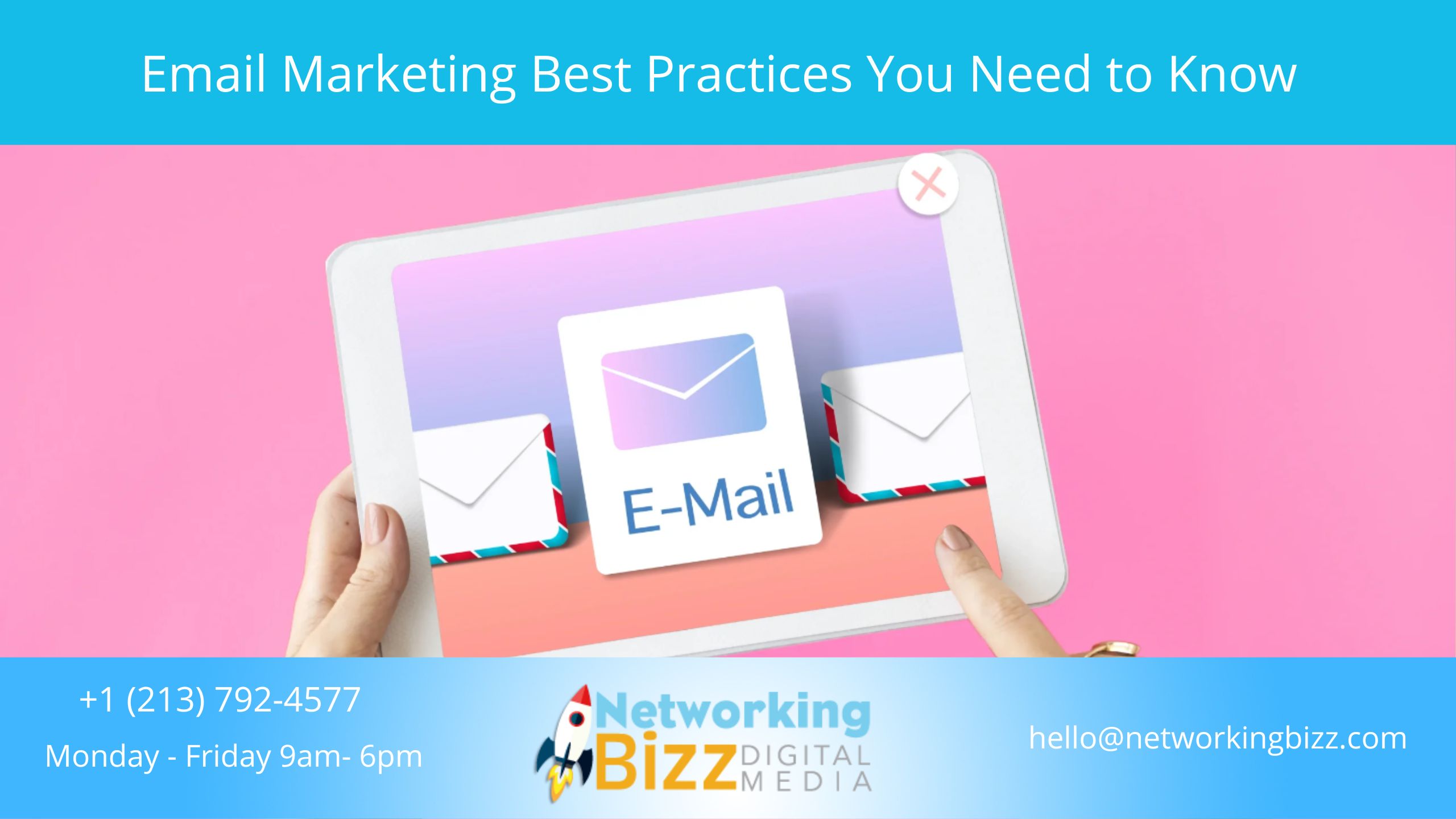Email marketing is a crucial part of any digital marketing strategy. As the landscape of digital marketing continues to evolve, it is essential to keep up-to-date with the latest best practices to ensure your email campaigns remain relevant and effective. In this article, we will explore the email marketing best practices you need to know in 2023 to drive engagement and ROI.
Table of Contents
- Understanding the Importance of Email Marketing in 2023
- Building a High-Quality Email List
- Crafting Compelling Email Content
- Designing Visually Appealing Emails
- Optimizing Email Deliverability
- Conclusion
Understanding the Importance of Email Marketing in 2023
In today’s world, where communication channels are diverse, email still stands out as one of the most effective ways to engage with customers. According to a study by Statista, the number of worldwide email users is expected to reach 4.4 billion by 2023. This means that email marketing will continue to be an essential tool for businesses to reach their audiences.
However, it’s not just the sheer number of email users that makes email marketing so important. Email marketing is cost-effective and has a high rate of ROI. It can help businesses build and nurture relationships with customers, drive website traffic, and generate leads. In fact, according to a study by Campaign Monitor, email marketing has an ROI of 4400%, making it one of the most effective marketing channels available.
Email marketing is also highly measurable, allowing businesses to track open rates, click-through rates, and conversion rates. This data can be used to optimize future campaigns and improve overall performance.
The Evolving Landscape of Digital Marketing
In the past few years, digital marketing has undergone significant changes. Consumers are exposed to increasing digital content, and businesses need to adapt to stay relevant. Digital marketers must use a range of channels to reach their audiences, including social media, search engines, and email.
However, despite the rise of other channels, email marketing remains a crucial part of any digital marketing strategy. In fact, according to a survey by Hubspot, 78% of marketers have seen an increase in email engagement over the last year.
Email marketing has evolved to include highly personalized content that resonates with specific audiences. Today, email marketing is about delivering the right message to the right person at the right time. Using data and analytics, businesses can create targeted campaigns tailored to the recipient’s interests and behaviors.
Why Email Marketing Remains Relevant
Email marketing remains relevant because it is highly adaptable. Email marketing campaigns can be tailored to target a specific audience, personalized to the recipient, and automated to deliver content at the right time. This makes email marketing an incredibly versatile tool that can be used for a variety of purposes, from lead generation to customer retention.
Furthermore, email marketing is a permission-based marketing channel. This means that recipients have given their consent to receive emails from a business, making them more likely to engage with the content. This is in contrast to other channels, such as social media, where users may be bombarded with unsolicited content.
Finally, email marketing allows businesses to track their campaigns’ success and fine-tune their approach for optimal performance. Businesses can identify areas for improvement and make data-driven decisions about their email marketing strategy by analyzing open rates, click-through rates, and conversion rates.
In conclusion, email marketing is a powerful tool that businesses can use to engage with customers, drive traffic, and generate leads. With the number of email users expected to continue growing, email marketing will remain an essential part of any digital marketing strategy in 2023 and beyond.
Building a High-Quality Email List
One of the key success factors for email marketing is building a high-quality email list. A high-quality list is one that includes subscribers who are interested in your products or services and have given explicit permission to receive your emails.
However, building a high-quality email list is easier said than done. It requires a lot of effort and time to identify and attract potential subscribers who are genuinely interested in your business. Here are some tips to help you build a high-quality email list:
Opt-In Strategies for Growing Your Subscriber Base
One of the best ways to build a high-quality email list is to use opt-in strategies to encourage subscribers to sign up for your newsletter or promotional emails. Opt-in strategies refer to the process of obtaining permission from potential subscribers before adding them to your email list.
There are several opt-in strategies that you can use to grow your subscriber base:
- Offer Exclusive Content: You can offer exclusive content to your subscribers that they can’t find anywhere else. This could be in the form of e-books, whitepapers, or webinars that provide valuable insights and information related to your industry.
- Provide Discounts: You can also offer discounts or promo codes to incentivize potential subscribers to sign up for your email list. This can be a great way to convert visitors into subscribers and drive sales for your business.
- Free Trials: Offering free trials is another effective way to encourage potential subscribers to sign up for your email list. This strategy works particularly well for businesses that offer software or other digital products.
It’s important to note that opt-in strategies should be transparent and comply with relevant laws and regulations. For example, the General Data Protection Regulation (GDPR) requires businesses to obtain explicit consent from subscribers before adding them to their email list.
Segmenting your Audience for Targeted Campaigns
Segmentation is one of the most effective ways to increase the relevance of your email campaigns. Segmentation allows businesses to divide their email list into smaller groups based on demographics, behavior, or interests. This allows for highly targeted campaigns that are more likely to drive engagement and conversions.
There are several ways to segment your email list:
- Demographic Segmentation: This involves dividing your email list based on demographic factors such as age, gender, location, or income. This can help you create campaigns tailored to each group’s specific needs and preferences.
- Behavioral Segmentation: This involves dividing your email list based on subscribers’ actions on your website or in response to your emails. For example, you can segment subscribers who have abandoned their shopping carts or those who have clicked on a particular link in your email.
- Interest-Based Segmentation: This involves dividing your email list based on the interests and preferences of your subscribers. For example, you can segment subscribers who have shown an interest in a particular product or service.
Segmentation can help you improve the effectiveness of your email campaigns by delivering more relevant content to your subscribers. By sending targeted campaigns, you can increase the chances of subscribers opening, clicking, and converting from your emails.
In conclusion, building a high-quality email list requires a combination of opt-in strategies and segmentation. By using these tactics, you can attract and retain subscribers who are genuinely interested in your business, and deliver highly targeted campaigns that drive engagement and conversions.
Crafting Compelling Email Content
To engage your subscribers, your email content must be compelling and informative. This means crafting emails that are attention-grabbing and offer value to your subscribers.
Writing Attention-Grabbing Subject Lines
The subject line is the first thing your subscribers see when they receive your email. A well-crafted subject line can entice your subscribers to open your email and engage with your content. Use clear, concise language and avoid using click-bait titles that disappoint your subscribers.
Personalization Techniques for Better Engagement
Personalization is an effective way to increase engagement with your email campaigns. Personalization can include addressing subscribers by their name or tailoring the content to their interests or behavior. Personalization helps to make the subscriber feel valued and can increase the chances of them taking action on your email.
Balancing Promotional and Informational Content
Balance is crucial when sending promotional emails. While promotional emails are an opportunity to drive sales, providing informative content that adds value to your subscribers is essential. This means including tips, news, or other relevant information alongside your promotional content.
Designing Visually Appealing Emails
Design is an essential element of email marketing. Your email design should be visually appealing, easy to read, and optimized for mobile devices.
Mobile-Friendly Email Design Tips
In 2023, mobile devices will continue to account for the majority of email opens. This means that your email design must be optimized for mobile devices. Ensure that your email design is responsive, including large buttons and fonts that are easy to read on a smaller screen.
Using Images and Multimedia Effectively
Visuals can add value to your email campaigns. Use high-quality images and videos to complement your content and make your emails more engaging. But don’t forget the importance of accessibility by including alt-text descriptions of your visuals to ensure that all subscribers can access your content.
Readability and Layout Best Practices
The layout of your email should be easy to read, with a clear hierarchy of information. Your email should be scannable with short paragraphs, bullet points, and headers. Use a clear call-to-action button to make it easy for your subscribers to take action on your email.
Optimizing Email Deliverability
Deliverability is a crucial element of email marketing. Your emails must reach your subscribers’ inboxes for your campaigns to be successful.
Avoiding Spam Filters and Blacklists
To ensure that your emails avoid spam filters and blacklists, follow best practices such as using a clear sender name and email address, avoiding spam trigger words, and maintaining a good sender reputation.
Sender Reputation and Authentication
Your sender reputation determents your email deliverability, so it is essential to maintain a good one. You can do this by emailing subscribers who have opted in and engaged with your emails. Sender authentication mechanisms such as DKIM, SPF, and DMARC can also help to increase the chances of your emails reaching the inbox.
The Importance of Consistent Sending Schedules
Consistent sending schedules can help to build trust with your subscribers and reduce the likelihood of your emails being marked as spam. Establish a regular sending schedule that aligns with your subscribers’ expectations and behavior.
Conclusion
Effective email marketing in 2023 requires adapting to the changing landscape of digital marketing. Keeping up-to-date with the latest best practices, building a high-quality email list, crafting compelling email content, designing visually appealing emails, and optimizing email deliverability can help increase engagement and drive ROI. Implementing these best practices will give your email campaigns the best chance of success in 2023 and beyond.


